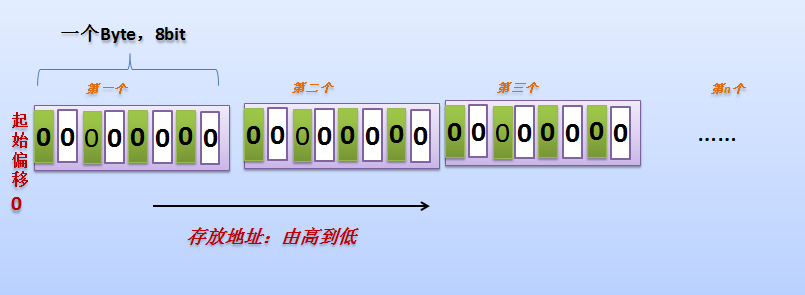简单点来说:Parcel就是一个存放读取数据的容器,
android系统中的binder进程间通信(IPC)就使用了Parcel类来进行客户端与服务端数据的交互,而且AIDL的数据也是通过Parcel来交互的。在Java空间和C++都实现了Parcel,由于它在C/C++中,直接使用了内存来读取数据,因此,它更有效率。
分析Binder机制中的客户端与服务器端进行实际操作ontransact()函数 :
//参数说明:
// code :是请求的ID号
// data :客户端请求发送的参数
// reply:服务器端返回的结果
// flags:一些额外的标识,如FLAG_ONEWAY等,通常为0.
virtual status_t onTransact( uint32_t code,
const Parcel& data,
Parcel* reply,
uint32_t flags = 0);
从中我们可以看到Parcel的重要性以及窥探它的使用情况,接下来,我主要分析它的存储机制。
常用方法介绍:
obtain() 获得一个新的parcel ,相当于new一个对象
dataSize() 得到当前parcel对象的实际存储空间
dataCapacity() 得到当前parcel对象的已分配的存储空间, >=dataSize()值 (以空间换时间)
dataPostion() 获得当前parcel对象的偏移量(类似于文件流指针的偏移量)
setDataPosition()
设置偏移量
recyle() 清空、回收parcel对象的内存
writeInt(int) 写入一个整数
writeFloat(float) 写入一个浮点数
writeDouble(double) 写入一个双精度数
writeString(string) 写入一个字符串
当然,还有更多的writeXXX()方法,与之对应的就是readXXX(),具体方法请参阅SDK。
其中几个值得注意的方法为:
writeException() 在Parcel队头写入一个异常
writeException() Parcel队头写入“无异常“
readException() 在Parcel队头读取,若读取值为异常,则抛出该异常;否则,程序正常运行。
一、Parcel的分析
相信看了前面的值,对Parcel的使用该有了初步印象。那么,Parcel的内部存储机制是怎么样的?偏移量又是
什么情况?让我们回忆一下基本数据类型的取值范围:
boolean 1bit 1字节
char 16bit 2字节
int 32bit 4字节
long 64bit 8字节
float 32bit 4字节
double 64bit 8字节
如果大家对C语言熟悉的话,C语言中结构体的内存对齐和Parcel采用的内存存放机制一样,即读取最小字节
为32bit,也即4个字节。高于4个字节的,以实际数据类型进行存放,但得为4byte的倍数。基本公式如下:
实际存放字节:
判别一: 32bit (<=32bit) 例如:boolean,char,int
判别二: 实际占用字节(>32bit) 例如:long,float,String,数组等
当我们使用readXXX()方法时,读取方法也如上述:
实际读取字节:
判别一: 32bit (<=32bit) 例如:boolean,char,int
判别二: 实际字节大小(>32bit) 例如:long,float,String,数值等
由上可以知道,当我们写入/读取一个数据时,偏移量至少为4byte(32bit),于是,偏移量的公式如下:
f(x)= 4x (x=0,1,…n)
事实上,我们可以显示的通过setDataPostion(int postion) 来直接操作我们欲读取数据时的偏移量。毫无疑问,
你可以设置任何偏移量,但所读取的值是类型可能有误。因此显示设置偏移量读取值的时候,需要小心。
另外一个注意点就是我们在writeXXX()和readXXX()时,导致的偏移量是共用的,例如,我们在writeInt(23)后,
此时的datapostion=4,如果我们想读取5,简单的通过readInt()是不行的,只能得到0。这时我们只能通过
setDataPosition(0)设置为起始偏移量,从起始位置读取四个字节,即23。因此,在读取某个值时,可能需要使用
setDataPostion(int postion)使偏移量装换到我们的值处。
巧用setDataPosition()方法,当我们的parcel对象中只存在某一类型时,我们就可以通过这个方法来快速的读取
所有值。具体方法如下:
/**
* 前提条件,Parcel存在多个类型相同的对象,本例子以10个float对象说明:
*/
public void readSameType() {
Parcel parcel =Parcel.obtain() ;
for (int i = 0; i < 10; i++) {
parcel.writeDouble(i);
Log.i(TAG, "write double ----> " + getParcelInfo());
}
//方法一 ,显示设置偏移量
int i = 0;
int datasize = parcel.dataSize();
while (i < datasize) {
parcel.setDataPosition(i);
double fvalue = parcel.readDouble();
Log.i(TAG, " read double is=" + fvalue + ", --->" + getParcelInfo());
i += 8; // double占用字节为 8byte
}
// 方法二,由于对象的类型一致,我们可以直接利用readXXX()读取值会产生偏移量
// parcel.setDataPosition(0) ; //
// while(parcel.dataPosition()<parcel.dataSize()){
// double fvalue = parcel.readDouble();
// Log.i(TAG, " read double is=" + fvalue + ", --->" + getParcelInfo());
// }
}
由于可能存在读取值的偏差,一个默认的取值规范为:
1、 读取复杂对象时: 对象匹配时,返回当前偏移位置的该对象;
对象不匹配时,返回null对象 ;
2、 读取简单对象时: 对象匹配时,返回当前偏移位置的该对象 ;
对象不匹配时,返回0;
下面,给出一张浅显的Parcel的存放空间图,希望大家在理解的同时,更能体味其中滋味。有点简单,求谅解。

相信通过前面的介绍,你一定很了解了了Parcel的存储机制,下面给定一应用程序来实践。
1、布局文件如下:
<?xml version="1.0" encoding="utf-8"?>
<LinearLayout xmlns:android="http://schemas.android.com/apk/res/android"
android:orientation="vertical" android:layout_width="fill_parent"
android:layout_height="fill_parent">
<TextView android:layout_width="fill_parent"
android:layout_height="wrap_content" android:text="@string/hello" />
<LinearLayout android:orientation="horizontal"
android:layout_width="fill_parent" android:layout_height="wrap_content">
<Button android:id="@+id/btWriteByte" android:layout_width="wrap_content"
android:layout_height="wrap_content" android:text="写入一个byte值"></Button>
<Button android:id="@+id/btWriteInt" android:layout_width="wrap_content"
android:layout_height="wrap_content" android:text="写入一个int值"></Button>
</LinearLayout>
<LinearLayout android:orientation="horizontal"
android:layout_width="fill_parent" android:layout_height="wrap_content">
<Button android:id="@+id/btWriteDouble" android:layout_width="wrap_content"
android:layout_height="wrap_content" android:text="写入一个double值"></Button>
<Button android:id="@+id/btWriteString" android:layout_width="wrap_content"
android:layout_height="wrap_content" android:text="写入一个String值"></Button>
</LinearLayout>
<View android:layout_width="fill_parent" android:layout_height="2dip"
android:background="#FF1493"></View>
<LinearLayout android:orientation="horizontal"
android:layout_marginTop="5dip" android:layout_width="fill_parent"
android:layout_height="wrap_content">
<Button android:id="@+id/btReadByte" android:layout_width="wrap_content"
android:layout_height="wrap_content" android:text="读取一个byte值"></Button>
<Button android:id="@+id/btReadInt" android:layout_width="wrap_content"
android:layout_height="wrap_content" android:text="读取一个int值"></Button>
</LinearLayout>
<LinearLayout android:orientation="horizontal"
android:layout_width="fill_parent" android:layout_height="wrap_content">
<Button android:id="@+id/btReadDouble" android:layout_width="wrap_content"
android:layout_height="wrap_content" android:text="读取一个double值"></Button>
<Button android:id="@+id/btReadString" android:layout_width="wrap_content"
android:layout_height="wrap_content" android:text="读取一个String值"></Button>
</LinearLayout>
<View android:layout_width="fill_parent" android:layout_height="2dip"
android:background="#FF1493"></View>
<Button android:id="@+id/btSameType" android:layout_width="wrap_content"
android:layout_height="wrap_content" android:text="利用setDataPosition读取多个值"></Button>
</LinearLayout>
2、配置文件如下:
<?xml version="1.0" encoding="utf-8"?>
<manifest xmlns:android="http://schemas.android.com/apk/res/android"
package="com.qinjuning.parcel"
android:versionCode="1"
android:versionName="1.0">
<application android:icon="@drawable/icon" android:label="@string/app_name">
<activity android:name=".MainActivity" android:label="@string/app_name">
<intent-filter>
<action android:name="android.intent.action.MAIN" />
<category android:name="android.intent.category.LAUNCHER" />
</intent-filter>
</activity>
</application>
</manifest>
3、程序主文件如下:
public class MainActivity extends Activity implements OnClickListener {
private static String TAG = "PARCELTEST";
// Button ID
private static int[] btIds = new int[] { R.id.btWriteByte, R.id.btWriteInt,
R.id.btReadDouble, R.id.btWriteString, R.id.btReadByte,
R.id.btReadInt, R.id.btReadDouble, R.id.btReadString,
R.id.btSameType };
// 每种类型的当前值
private byte cur_byte = 1; // 每次总写入 false
private int cur_int = 10; // 写入值 cur_int ++ ;
private double cur_float = 100.0d; // 写入值 cur_float++ ;
private String cur_str = "QinJun -->" + cur_int; // 写入值 "QinJun -->"+cur_int
private Parcel parcel = null;
@Override
public void onCreate(Bundle savedInstanceState) {
super.onCreate(savedInstanceState);
setContentView(R.layout.main);
for (int i = 0; i < btIds.length; i++) {
Button bt = (Button) findViewById(btIds[i]);
bt.setOnClickListener(this);
}
parcel = Parcel.obtain(); // 获得一个Parcel对象 ,相当于new一个,初始大小为0
Log.i(TAG, "The original parcel info" + getParcelInfo());
}
@Override
public void onClick(View view) {
// TODO Auto-generated method stub
int viewId = view.getId();
switch (viewId) {
case R.id.btWriteByte:
parcel.setDataPosition(0);
parcel.writeByte(cur_byte);
Log.i(TAG, " after write byte, --->" + getParcelInfo());
break;
case R.id.btWriteInt:
parcel.writeInt(cur_int);
Log.i(TAG, " after write int, --->" + getParcelInfo());
break;
case R.id.btWriteDouble:
parcel.writeDouble(cur_float);
Log.i(TAG, " after write float, --->" + getParcelInfo());
break;
case R.id.btWriteString:
parcel.writeString(cur_str);
Log.i(TAG, " after write String, --->" + getParcelInfo());
break;
case R.id.btReadByte:
byte b = parcel.readByte();
Log.i(TAG, " read byte is=" + b + ", --->" + getParcelInfo()
+ "String");
break;
case R.id.btReadInt:
int i = parcel.readInt();
Log.i(TAG, " read int is=" + i + ", --->" + getParcelInfo());
break;
case R.id.btReadDouble:
float f = parcel.readFloat();
readSameType();
Log.i(TAG, " read float is=" + f + ", --->" + getParcelInfo());
break;
case R.id.btReadString:
parcel.setDataPosition(0);
String str = parcel.readString();
Log.i(TAG, " read float is=" + str + ", --->" + getParcelInfo());
break;
case R.id.btSameType:
readSameType();
break;
default:
break;
}
}
private String getParcelInfo() {// 得到parcel的信息
return "dataSize = " + parcel.dataSize() + ", dataCapacity="
+ parcel.dataCapacity() + ", dataPositon = "
+ parcel.dataPosition();
}
/**
* 前提条件,Parcel存在多个类型相同的对象,本例子以10个float对象说明:
*/
public void readSameType() {
for (int i = 0; i < 10; i++) {
parcel.writeDouble(i);
Log.i(TAG, "write double ----> " + getParcelInfo());
}
//方法一 ,显示设置偏移量
int i = 0;
int datasize = parcel.dataSize();
while (i < datasize) {
parcel.setDataPosition(i);
double fvalue = parcel.readDouble();
Log.i(TAG, " read double is=" + fvalue + ", --->" + getParcelInfo());
i += 8; // double占用字节为 8byte
}
// 方法二,由于对象的类型一致,我们可以直接利用readXXX()读取值会产生偏移量
// parcel.setDataPosition(0) ; //
// while(parcel.dataPosition()<parcel.dataSize()){
// double fvalue = parcel.readDouble();
// Log.i(TAG, " read double is=" + fvalue + ", --->" + getParcelInfo());
// }
}
}
由于取值时,可能存在类型的转换,因此点击按钮时,可能不会产生预期结果。因此,得保证偏移量对应数值的正确性。
二、Parcel的使用
关于Parcel的使用,请参考如下两票文章,小生也就不再赘述了。
1、Android高手进阶教程(十七)之---Android中Intent传递对象的两种方法(Serializable,Parcelable)!
2、 Android高手进阶教程(二十五)之---Android 中的AIDL!!!
分享到:




相关推荐
在Android开发中,Parcel机制是一种专为高效IPC(Inter-Process Communication,进程间通信)设计的序列化和反序列化机制。与Java中的常规序列化不同,Parcel并不适用于持久化存储,而是专注于在进程间快速传递数据...
### Android AIDL 分析 #### 一、AIDL 原理及应用场景 **AIDL**(Android Interface Definition Language)是Android平台提供的一种用于定义进程间通信接口的语言。它主要用于实现不同进程之间的通信,即**IPC**...
在提供的资源文件`序列化流程图.PNG`中,可能详细展示了这些步骤,包括如何将对象的各个字段写入Parcel,以及如何按照特定顺序从Parcel中恢复它们。 为了提高效率,开发者应遵循一些最佳实践: - 使用`Parcelabler`...
在Android应用开发中,源码分析是提升技术能力的重要途径,特别是对于理解应用程序的工作原理、优化性能以及解决特定问题有着至关重要的作用。本资源“Android应用源码之(遍历Body).zip”提供了关于Android应用如何...
在Android中,我们可以使用多种方式实现IPC,如Binder、AIDL(Android Interface Definition Language)、ContentProvider、BroadcastReceiver和Intent。在这个Demo中,`PlayerClient`可能采用了Binder或AIDL,因为...
2. **用户空间库**:在Linux上实现与Android Binder兼容的用户空间库,包括Binder接口、Parcel对象的序列化和反序列化以及线程管理等。 3. **Service Manager**:移植Android的Service Manager,使得服务能在系统中...
在"android_aidl_est"这个压缩包中,可能包含了实现上述步骤的源代码示例,你可以通过分析这些代码来深入理解AIDL和Parcelable的用法。这个DEMO将帮助你更好地理解如何在Android应用中实现跨进程通信,特别是在处理...
### Android RIL结构分析与移植 (2):深入解析RIL初始化及请求流程 #### 一、RIL初始化流程详解 ##### Rild的初始化过程: Rild,即Radio Interface Layer Daemon,是Android系统中用于管理和控制无线通信硬件的...
总结,这个示例“android进程间通信测试代码”展示了如何在Android中不依赖AIDL,通过Parcel实现简单数据类型的进程间通信。理解并熟练掌握这种通信方式,对于开发高效且可靠的Android应用至关重要。
通过分析和实践这些源代码,开发者可以更深入地理解数据的读写、文件操作以及网络通信等基本功能。 首先,IO流在Android中主要用于读取和写入文件。Android提供了多种类型的流,包括FileInputStream和...
总结来说,Bundle是Android中传递数据的关键工具,它的使用涵盖了基本类型、Parcelable和Serializable对象。理解其工作原理和源码实现,有助于开发者更高效地在组件间传递数据,同时避免潜在的性能问题。通过深入...
在Android开发中,我们可以使用多种方式来实现屏幕截屏,包括系统级别的截图以及应用程序级别的截图。 ### 1. 系统级别屏幕截屏 系统级别的屏幕截屏通常是通过系统服务来实现的,例如`SurfaceFlinger`服务。`...
最后,课程关注数据在应用程序和硬件之间的传输,如何使用Bundle和Parcel进行数据封装,利用IPC Parcel进行跨进程通信,以及如何通过回调方法实现硬件数据的获取。此外,课程还介绍了如何进行软件模块化,将模块整合...
Binder 在 Android 中被广泛应用于系统内部组件之间以及应用程序与系统服务之间的通信。Binder 既支持 Java 环境也支持 C/C++ 环境,这使得它成为 Android 系统架构中连接不同语言层的关键技术。 #### 二、Binder ...
在Android系统中,AIDL(Android Interface Definition Language)是一种接口定义语言,用于处理进程间通信(Inter-Process Communication,IPC)。当一个应用需要与另一个应用进行数据交换时,AIDL就派上了用场。它...
在Android系统中,跨进程通信(IPC,Inter-Process Communication)是实现不同应用程序间数据交换的关键技术。Android的AIDL(Android Interface Definition Language)就是专为处理这种需求而设计的,它允许开发者...
本文将深入探讨Android Binder的原理、实现方式以及其在Android开发中的应用。 一、Binder机制概述 1.1 Binder结构 Binder通信基于客户端-服务器模型,由三部分构成:Client(客户端)、Server(服务端)和...
这个项目包括了ServiceDemo,我们可以从中学习到如何创建、启动、绑定Service以及使用AIDL(Android Interface Definition Language)来跨进程通信。 1. **Service基础知识** - **Service生命周期**:Service的...